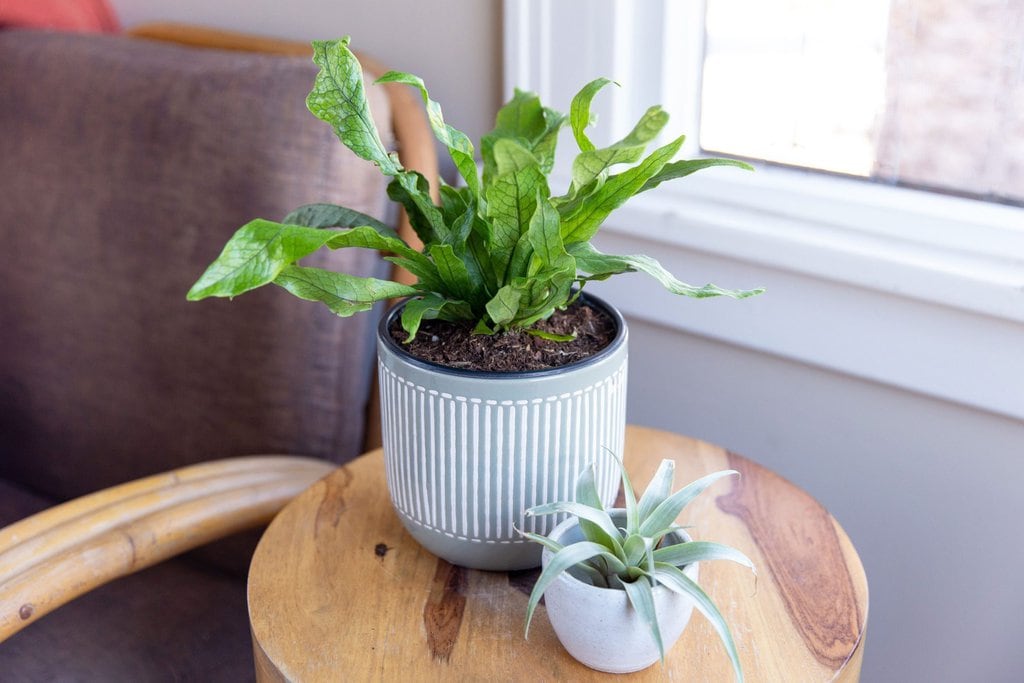
Many types of ferns flourish indoors and can give any room a tropical and lush appearance. This diverse group of plants includes smooth, substantial foliage, among other textures and hues. Here are seven fern suggestions to get you started, as well as care and display ideas.
The Staghorn Fern Attracts Attention

The Staghorn fern attracts attention for two reasons: its antler-like fronds, which give it its common name, and its unusual growth. Staghorn ferns are epiphytes, this means that they grow on other plants in nature. Therefore, they don’t require soil pots like other plants. Use them as statement-making displays, such as affixed on wall-mounted boards. They should be watered similarly to air plants, by misting them daily and soaking them weekly.
The Maidenhair Fern Needs a Lot of Water

Maidenhairs have a reputation for being difficult to grow indoors. Due to their affinity to moisture, they need a great deal of water and humidity. That said, if you are prone to overwatering, this fern is perfect for you. It will recompense you with fine-textured fronds and long, black, wiry stems if you provide daily misting. The name of this fern is Adiantum Raddianum, and the conditions for its growth are medium to bright light and high humidity.
Lemon Button Fern

This fern is as adorable as a button due to its minuscule, golden-green, rounded leaflets. These long, arching fronds are perfect for hanging containers or terrariums. This simple fern adds a lushness to any design style. Its name is Nephrolepis Cordifolia, and the conditions for the plant’s growth are medium to bright light and high humidity.
Kangaroo Pawn Fern

Shiny, dark green fronds form an unruly mound that resembles the hair of Medusa. This Australian fern received its name from its long leaves, which resemble a kangaroo’s enormous feet. Similar to a rabbit’s foot fern, it has dense rhizomes that may creep down the sides of its container. The full name of this fern is Microsorium Diversifolium, and the growing condition is medium to moderate light and average humidity.
Rabbit’s Foot Fern

This attractive plant has dark green, delicate-looking fronds and rootlike stems that creep down on the side of its pot or along the soil. The rhizomes that inspired the common name are covered in grayish-white filaments. Display these rhizomes by cultivating them in hanging planters. The name of this fern is Humata Tyermanii, and its growing conditions are medium to bright light and high humidity.
Crocodile Fern’s Bright Green Leaves

The straplike, bright green leaves have a distinctly reptilian, scaly appearance that is not typical of ferns. Its common name is also explained by its fronds. Crocodile ferns make quite a statement when fully grown, often reaching a length of about two to three feet. The full name of this fern is Microsorium Musofolium Crocodyllus, and the growing conditions are medium to low light and high humidity.
Silver Brake Fern

People love the two-tone foliage of this striking fern, which also goes by the names Silver Lace Fern or Slender Brake Fern. Each frond consists of several slender leaflets, separated by a silver strip down the middle. Maintain the health of this fern by never allowing the soil to completely dry out between waterings. The conditions for this plant growth are medium to bright light and high humidity.